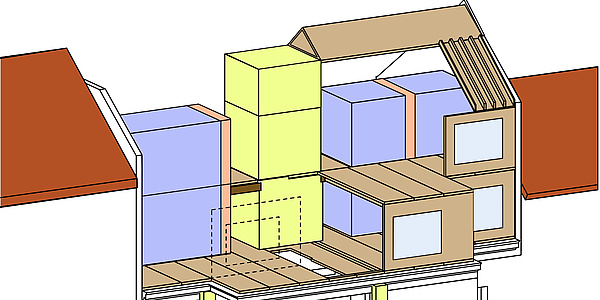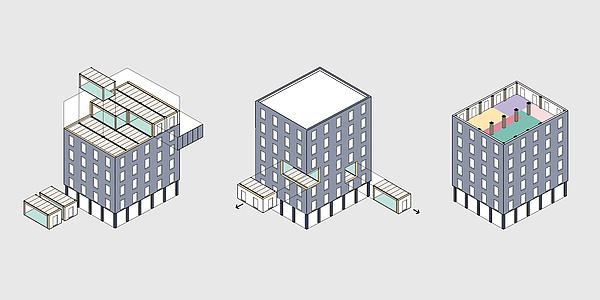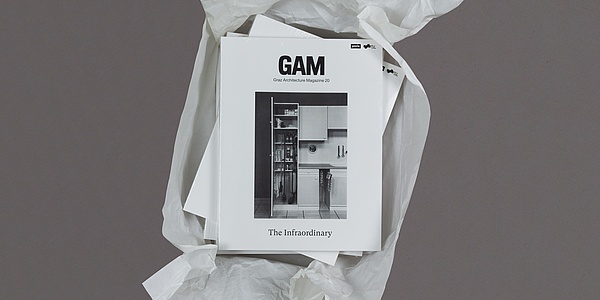GAM 20 The Infraordinary: The everyday in architecture
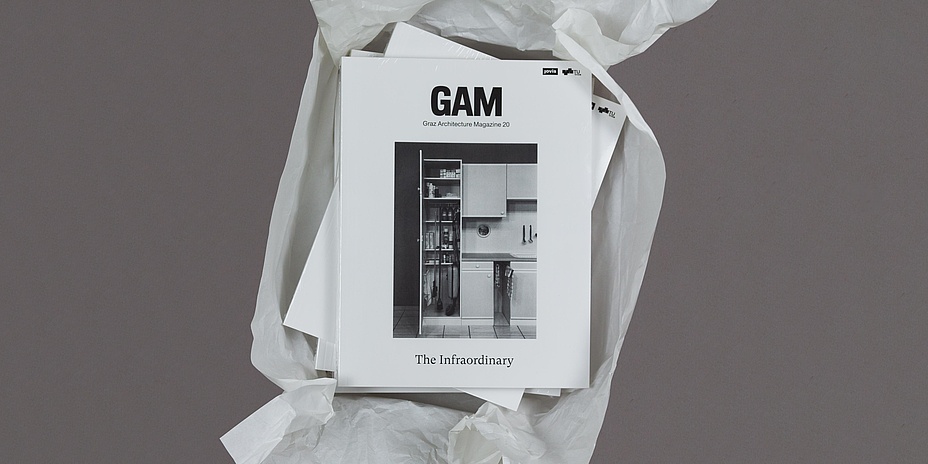
In GAM 20 The Infraordinary, the everyday is given a stage in architecture. Guest editors Matthias Castorph and Julian Müller from the Institute of Design in Existing Structures and Architectural Heritage Protection at Graz University of Technology (TU Graz) refer to Georges Perec’s concept of art l’infra-ordinaire, which in the 1970s focused on everyday places such as Parisian streets, squares or apartment blocks in order to capture everything that is usually overlooked. In both Perec and GAM 20, however, the ordinary is not meant in a pejorative sense, but rather refers to the non-extraordinary, the non-exceptional. In this spirit, the articles in GAM 20 are dedicated to the non-extraordinary in the context of architecture. The perspectives are both sociological and architectural in nature. Here is an – incomplete – foretaste for interested readers.
New uses of historical architecture
In their contribution, Alberto Calderoni and Luigimanuele Amabile focus on the backyards and stairwells of Neapolitan palazzi and illustrate them with photographs that capture the traces of their everyday use. Ena Kukić also dedicates herself to new ways of using historical architecture. Without nostalgia, she traces the history of the K67 kiosk, which was an indispensable part of everyday life in the former Yugoslavia as a newspaper stand, ski lift cabin or flower shop. She is particularly interested in the astonishing durability and current use of the mass-produced kiosk.
A persevering view instead of aestheticization
Michael Heinrich’s photo series shows simple shelters, dovecotes and stables in the Serranía Celtibérica, a sparsely populated area in north-east Spain, which lose the appearance of simplicity after a longer look at their proportions, details or materials. Helmut Tezak’s decades-spanning photographic documentation of his own everyday life in the city of Graz also requires a persevering gaze. Anyone who looks closely at the pictures will recognise the meticulousness, persistence and repetitiveness that characterize Tezak’s photographic examination of everyday life.
Architecture and sociology
The contribution by American sociologist Sherri Cavan is the result of her field research in Californian bars and deals with the interrelationship between space and social behaviour by analysing seating arrangements and reconstructing spatial movements. In her text from 1971, Denise Scott Brown also looks at architecture through a sociological lens and argues in favour of a closer examination of pop culture, which is more strongly oriented towards human needs and represents a source of information on the symbolic and communicative aspects of architecture.
Architecture of mobility
The connection between architecture and mobility plays a central role in the contributions by Beatrice Azzola and Svenja Hollstein. Azzola reconstructs the history of the Autogrill service stations and uncovers the vanished visions of the future that were once associated with these striking buildings. Svenja Hollstein also devotes herself to automobility, but views the car not as a means of transport but as a movable piece of furniture. Based on Josef Frank’s considerations on the furnishing of interior spaces, she attempts to transfer them to the street design of Graz.
Available in bookshops
In numerous other exciting contributions, the authors of GAM 20 The Infraordinary embark on a search for the everyday in architecture. The 268-page bilingual publication (German and English) will be available in bookshops from 6 May or can be ordered directly from JOVIS Verlag.
GAM 20: With contributions by Luigiemanuele Amabile, Beatrice Azzola, Ajna Babahmetović, Alberto Calderoni, Andrea Canclini, Matthias Castorph, Sherri Cavan, Michael Heinrich, Svenja Hollstein, Johanna-Charlotte Horst, Ena Kukić, Thomas Meinecke, Luc Merx, Julian Müller, Denise Scott Brown and Helmut Tezak. .
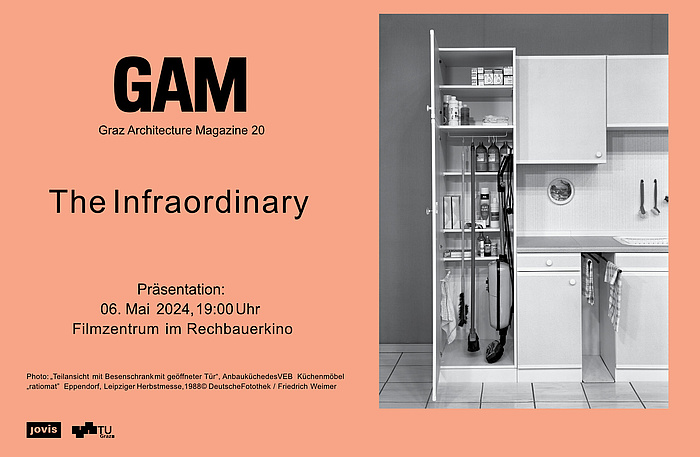
After GAM 20 is before GAM 21
Interested authors can find the current call for contributions to the GAM 21 issue “Confronting the Environmental Crisis” on the GAM website.
Kontakt
Contact person of TU Graz:
Annalena ARMINGER, BSc
GAM Editorial Office
TU Graz | Faculty of Architecture
Rechbauerstraße 12/1.Basement
8010 Graz, Austria
Tel.: +43 316 873 4186
annalena.arminger@tugraz.at
